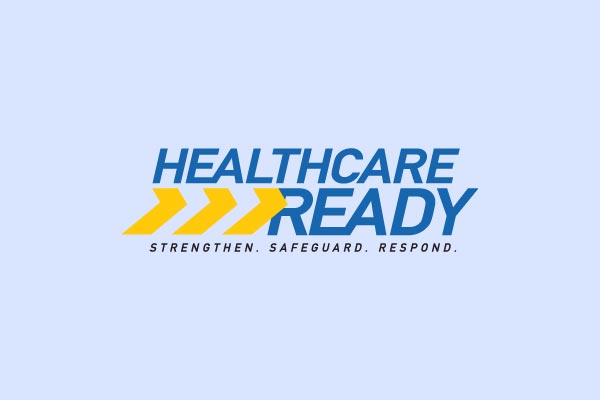Healthcare Ready and AARP: Trainings and Exercises for State-Level Coordination
The onset of the COVID-19 pandemic posed unique care coordination challenges for many medically vulnerable populations. To support the American Association of Retired Persons (AARP) in creating national and state-level coordinated response capacity, Healthcare Ready worked with leadership from each of the Mega 7 State Offices to convene a virtual disaster preparedness training and exercise session.
Meeting Outcomes
In support of AARP’s mission, throughout this session we focused on how both the COVID-19 pandemic and concurrent local crises impacted and could impact older adults by centering the following objectives:
- Examine how preparedness and recovery efforts for all hazards are integral to AARP’s social mission
- Understand how AARP state offices can support one another as “second and third” responders
- Explore and understand what technical assistance to the AARP community looks like in the “new normal” of COVID-19 and complex emergencies
The Impact of Crises on Older Adults
For many older adults, health is influenced more by their daily lives than by medical interventions. This can be concerning because changes in the types of foods eaten due to changes in food availability during shelter-in-place orders could precipitate or exacerbate issues like heart failure. Lack of exercise due to isolating at home may lead to deconditioning with subsequent weakness and falls. When facing the challenges of social isolation, older adults are particularly vulnerable to rapid mental declines.
Additionally, during the first weeks and months of the COVID-19 crisis, medical appointments were moved to the virtual space to reduce face-to-face contact and minimize the risk of transmission, especially in hospitals. This was a cause of concern for many older adults as hearing loss, cognitive impairment, and unfamiliarity with new technology could compromise their ability to effectively communicate with their doctor. Similarly, many older adults expressed fear of transmission in a hospital or doctor’s office. As a result, some decided not to attend essential appointments and checkups. Neglecting these appointments could cause serious complications and exacerbate existing chronic health issues that require supportive management.
Training Content & Strategies
As part of this convening, we focused on three primary areas for coordination and response support:
- Methods for identifying socially vulnerable and medically fragile groups — not just existing populations in these groups, but also individuals who will fall into one or both groups as a result of the pandemic
- Engagement and partnership with ancillary care providers (non-hospital) during COVID-19
- Best practices for partnering with the government on COVID-19 and other crisis response efforts
Participants engaged in virtual tabletop exercises in small groups to test specific functions of coordination and collaboration during emergency responses, especially in restrictive environments such as pandemics, where social distancing and other public health measures could complicate emergency responses. Tabletop exercises consisted of vignettes related to a specific hazard or convergence of hazards and provided attendees with the opportunity to describe their actions and learn from others.
Key Takeaways
- Opportunities for improving coordination with government were highlighted: Participants learned about opportunities for formalizing and improving coordination and information sharing with state and local government, such as embedding representatives at local Emergency Operations Centers (EOCs). Representatives from Florida highlighted this as a best practice. Participants emphasized the criticality of state government decisions on their operations during COVID-19, and the need to have tighter channels to communicate with state government officials.
- Understanding AARP Stakeholders: A key population AARP offices serve is the “hidden vulnerable.” These are individuals and households that have adequate resources during blue skies but may be particularly vulnerable to the adverse impacts of a disaster, such as managing co-morbidities or being dependent on power for medical devices. Accordingly, it is important AARP resources and messaging are targeted to or inclusive of these populations. Participants also recognized the need to utilize multiple modes of communications, including radio stations, to reach the “over 50” population that may not use electronic and social media.
- Information management and effectively disseminating key messages remain a priority: Participants agreed that “information overload,” particularly in the COVID-19 environment, is a persistent challenge. Participants highlighted AARP offices often need to deconflict competing messages from local, state, and federal officials. At the same time, representatives acknowledge the responsibility and power AARP has to do this, as the organization is a recognized trusted source of information by many communities.
Key Recommendations
- Refresh the Disaster Management Guidebook annually with best practices from Mega 7 State Offices: These best practices can/should be submitted directly by leadership from the Mega 7 State Offices. Practices specifically cited during the exercise included the development of a website with local resources and newsletters for volunteers.
- Encourage Mega 7 State Offices to utilize tools available through AARP to improve disaster planning: Several participants indicated the usefulness of Incident Assessment Checklists and Core Recommended Tactics worksheet during recent responses, while other state offices indicated they had not yet leveraged these resources in their disaster planning. The states may benefit from utilizing these planning tools, as well as the technical support of the Disaster SEERG team.
- Tailor AARP communications plans and strategies around those of local and state officials and agencies to fill identified gaps: Participants recognize and appreciate the respect AARP’s voice has in communities and how it may be used to combat misinformation and/or reach populations public sector messaging is not.
- Participants agreed that a key information campaign all state offices would be engaging on in the near future centers on safe voting practices and sharing plans and strategies related to this through the Disaster SEERG or other platform would be beneficial.



